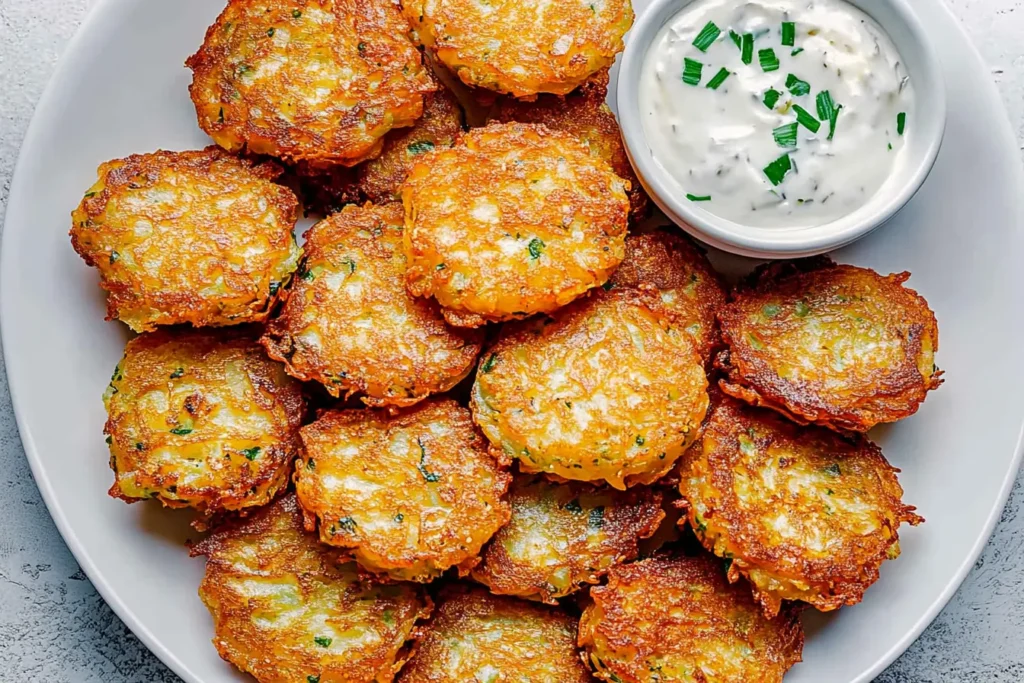Discovering the best substitutes for matzo meal in latkes doesn’t have to be daunting. Whether you’re looking for gluten-free alternatives, tackling dietary restrictions, or running out of matzo meals, there are plenty of creative options. In this article, we’ll break down everything you need to know about matzo meal, its role in making latkes, and the top substitutes that deliver the perfect texture and taste. With these tips and alternatives, you’ll be whipping up delicious latkes in no time!
Understanding Matzo Meal
What Is Matzo Meal and Why Is It Used in Latkes?
Matzo meal is ground matzo bread, often used as a binding agent in recipes like latkes, meatballs, and kugels. But why is it such a popular choice for latkes? Its slightly coarse texture gives latkes their classic structure, while its subtle flavor allows the main ingredients like potatoes and onions to shine. Unlike regular flour, matzo meal doesn’t overpower the dish; instead, it works as a team player to hold everything together.
Types of Matzo Meal and Their Differences
Interestingly, not all matzo meals are created equal. You’ll typically come across two main types:
- Fine Matzo Meal: This is ground into a finer texture and is perfect for recipes requiring a smoother consistency.
- Coarse Matzo Meal: This variety has a grittier feel, adding extra crunch to dishes like latkes.
Both types serve their purpose, but if you’re out of a matzo meal or need a substitute, it’s important to keep these textural differences in mind when choosing an alternative.
Why Do People Look for Substitutes for Matzo Meal?
There are several reasons why you might need a substitute for matzo meal. For one, it’s not always readily available in some regions or outside Jewish communities. Additionally, since traditional matzo meal contains gluten, people with dietary restrictions or gluten sensitivities often search for gluten-free options. On top of that, there’s the element of experimentation sometimes, you just want to try something different and see how it affects your latkes’ taste and texture!

Top Substitutes for Matzo Meal in Latkes
Breadcrumbs: The Closest Match to Matzo Meal
When you’re out of a matzo meal, breadcrumbs often come to the rescue. They’re easy to find, incredibly versatile, and mimic the binding properties of matzo meal. Whether you opt for regular, whole wheat, or panko breadcrumbs, each option can give your latkes a satisfying crunch. For those seeking a lighter texture, panko breadcrumbs are a game-changer.
Pro Tip: If using seasoned breadcrumbs, cut back on any additional salt or spices in your recipe to avoid overpowering the latkes.
Crushed Crackers: A Salty and Crunchy Alternative
Crushed crackers, like saltines or plain water crackers, can work wonders as a substitute for matzo meal. Their crispy texture blends seamlessly with the potatoes and onions, ensuring your latkes hold together beautifully. However, crackers are often salted, so it’s important to adjust the seasoning accordingly.
Almond Flour: A Gluten-Free Favorite
For those looking to keep their latkes gluten-free, almond flour is a fantastic option. Made from finely ground almonds, this substitute adds a slightly nutty undertone to your latkes. While it may not deliver the same crunch as a matzo meal, it provides excellent binding properties and works perfectly for those with dietary restrictions.
Why It’s Great: Almond flour is naturally low in carbs and high in protein, making it a healthier choice without compromising flavor.
Potato Starch: Ideal for Passover and Beyond
Potato starch is a lifesaver during Passover, as it’s kosher-friendly and works well in potato-based dishes. Since it’s incredibly light and fine, it creates latkes that are airy and crisp on the outside while remaining tender inside.
Pro Tip: Use potato starch sparingly; a little goes a long way in achieving the desired texture.
Flour (All-Purpose, Rice, or Chickpea)
Flour is one of the most accessible substitutes for matzo meal, and it’s incredibly versatile. All-purpose flour provides a neutral taste, while rice flour offers a gluten-free option that’s light and fluffy. For a unique twist, try chickpea flour, which adds a slightly earthy flavor to your latkes.
Keep in Mind: You may need to experiment with the quantity of flour, as it can make your latkes denser if overused.
Ground Oats or Oat Flour: A Wholesome Choice
Ground oats or oat flour bring a hearty, rustic feel to your latkes. They’re a healthier alternative to matzo meal and are naturally gluten-free (as long as you use certified gluten-free oats). This substitute creates a softer, more tender latke, perfect for those who enjoy a less crispy texture.
Cornmeal: A Unique Twist for Texture Enthusiasts
Cornmeal might not be the first substitute that comes to mind, but it adds a gritty texture and a subtly sweet flavor to your latkes. It’s a fantastic option for anyone looking to shake things up and try a slightly different version of this classic dish.
Pro Tip: Choose fine cornmeal for a more cohesive mix, as coarser varieties can make the latkes crumbly.
Which Substitute Should You Choose?
The “best” substitute ultimately depends on your preferences and needs. If you’re aiming for crunch, breadcrumbs or crushed crackers are excellent choices. For gluten-free latkes, almond flour or potato starch are clear winners. And if you’re in the mood for experimentation, ground oats or cornmeal can bring something new to the table.
How Substitutes Affect the Texture and Taste of Latkes
Crunchiness vs. Softness: Finding the Right Balance
One of the most noticeable differences when using a matzo meal substitute is how it changes the texture of your latkes. Matzo meal typically creates latkes that are crisp on the outside yet soft and fluffy inside. Substitutes, however, can tip this balance in one direction or another.
- Breadcrumbs and Crushed Crackers: These create a crunch similar to a matzo meal, making them excellent for those who love crispy latkes. Panko breadcrumbs, in particular, amplify the crunchiness to another level.
- Almond Flour and Oat Flour: These tend to result in softer, less crispy latkes, which some might prefer for a more delicate texture.
- Potato Starch and Cornmeal: While potato starch produces a light, airy crisp, cornmeal offers a hearty, rustic bite that feels more substantial.
If texture is a top priority, choosing the right substitute is key to achieving the perfect latke consistency.
Flavor Adjustments When Using Substitutes
The taste of your latkes can also shift depending on the substitute you use. Matzo meal has a neutral flavor, which allows the savory notes of the potatoes, onions, and spices to take center stage. Some substitutes, however, bring their flavor profiles to the dish.
- Almond Flour: Adds a subtle nutty undertone that pairs surprisingly well with savory ingredients.
- Cornmeal: Offers a faint sweetness, which can be balanced with additional salt or spices.
- Chickpea Flour: Introduces an earthy flavor, making it an interesting twist for adventurous palates.
When experimenting with substitutes, don’t hesitate to tweak your seasoning to balance or complement these new flavors.
Moisture Retention and Frying Behavior
Different substitutes absorb moisture at varying rates, which can directly impact the frying process.
- Potato Starch and Almond Flour: These absorb less moisture, which means your latke batter might be a bit wetter than usual. Adding a pinch more of the substitute can help achieve the right consistency.
- Breadcrumbs and Ground Oats: These soak up moisture more effectively, resulting in a firmer batter that’s easier to shape.
The frying behavior also changes depending on the substitute. For instance, almond flour tends to brown quickly due to its natural oils, so keeping an eye on your frying temperature is crucial. On the other hand, substitutes like potato starch require slightly less frying time, as they crisp up faster.
Cooking Times and Heat Sensitivity
Adjusting your cooking time is another factor to consider when using substitutes. Some ingredients, like breadcrumbs, brown faster and require a slightly lower heat setting to avoid burning. Others, like rice flour, need more time to achieve that signature golden-brown crust.
When frying latkes with substitutes, always test a small batch first. This helps you fine-tune the heat and cooking time without wasting the entire batch.
Which Substitute Delivers the Best Texture?
The answer depends on what you’re looking for. If you’re after a crispy exterior, breadcrumbs, crackers, or potato starch will serve you well. For those who prefer a softer, fluffier latke, almond flour or ground oats are fantastic options.
It’s worth noting that the perfect latke isn’t just about the ingredients—it’s also about technique. Ensuring your oil is at the right temperature and avoiding overcrowding the pan are just as critical as picking the right substitute.

Homemade Matzo Meal Alternatives
DIY Matzo Meal: Turning Leftovers Into a Cooking Staple
If you have leftover matzo crackers sitting in your pantry, you’re already halfway to making your own matzo meal. Homemade matzo meal is not only fresh but also allows you to control the texture, whether you want it fine or coarse.
How to Make It:
- Break matzo crackers into smaller pieces.
- Place them in a food processor or blender.
- Pulse until you reach your desired consistency.
- Store in an airtight container for future use.
This method is quick and ensures you’ll always have a matzo meal on hand, even if it’s not readily available at the store.
Creating Alternative Binders at Home
Homemade binders can work just as well as matzo meal and don’t require many ingredients. A little creativity can go a long way!
- Potato Flakes and Breadcrumb Mix: Combine instant potato flakes with breadcrumbs for a balanced binding option. The flakes add moisture retention, while the breadcrumbs provide structure.
- Oatmeal Blend: Grind rolled oats into fine flour or leave them slightly coarse for texture. They act as a great binding agent while keeping things wholesome.
- Rice Cracker Crumble: Blend plain rice crackers into a crumbly texture for a gluten-free alternative.
These alternatives are versatile and can be tailored to your taste or dietary needs. Plus, they’re an excellent way to use up pantry staples that might otherwise go to waste.
Why Homemade Options Are a Great Choice
Homemade alternatives offer flexibility that store-bought options simply can’t match. You can customize the flavor, texture, and even the portion size to suit your recipe. They’re also cost-effective, as many of these ingredients are affordable and widely available.
How to Store Homemade Matzo Meal and Alternatives
Proper storage is essential to keep your homemade substitutes fresh. Here are a few tips:
- Use airtight containers to prevent moisture and pests from ruining your mixture.
- Label containers with the date, so you know when they were made.
- Store in a cool, dry place for up to a month or freeze for a longer shelf life.
With these storage practices, you can prepare your substitutes in advance and always be ready to whip up a batch of delicious latkes.
When to Use Homemade Options vs. Store-Bought Substitutes
Homemade options are perfect for last-minute solutions or when you’re aiming for a more personal touch in your cooking. However, store-bought substitutes like breadcrumbs or almond flour are convenient for those who prefer to save time. Either way, the result is a tasty plate of latkes that doesn’t compromise on flavor or texture.

Frequently Asked Questions (FAQs)
What can you use instead of a matzo meal for latkes?
There are several substitutes for matzo meal in latkes, such as breadcrumbs, crushed crackers, almond flour, potato starch, ground oats, or cornmeal. Each option provides a slightly different texture and flavor, so you can choose based on your preference or dietary requirements.
What can I use in place of a matzo meal?
In place of matzo meal, you can use alternatives like all-purpose flour, rice flour, chickpea flour, panko breadcrumbs, or even homemade ground matzo crackers. If you’re looking for gluten-free options, almond flour or potato starch are excellent choices.
Is matzo meal just crushed matzah?
Yes, a matzo meal is essentially just matzo crackers that have been finely ground into a breadcrumb-like consistency. The texture can vary from fine to coarse, depending on the type of matzo meal you purchase or prepare.
What can I substitute for flour in latkes?
If you want to skip flour in latkes, there are plenty of substitutes. Potato starch is a great gluten-free option, while almond flour, chickpea flour, or ground oats work well as binding agents. These substitutes not only hold the latkes together but also add unique flavors and textures.
Conclusion
Making delicious latkes without matzo meal is entirely possible, thanks to the wide variety of substitutes available. Whether you’re using breadcrumbs for their crunch, almond flour for a gluten-free option, or potato starch for a light and airy texture, each alternative offers something special to your dish.
Understanding how substitutes affect the texture and flavor of your latkes allows you to experiment and find the perfect match for your preferences. Homemade options, like ground oats or DIY matzo meal, can be a fun and cost-effective way to get creative in the kitchen.
Ultimately, the best substitute for a matzo meal depends on your needs, whether they’re dietary, cultural, or culinary. With the right choice, you’ll still achieve the crispy, golden latkes we all love. So, go ahead and try these alternatives—you might just discover a new favorite twist on this classic dish!

